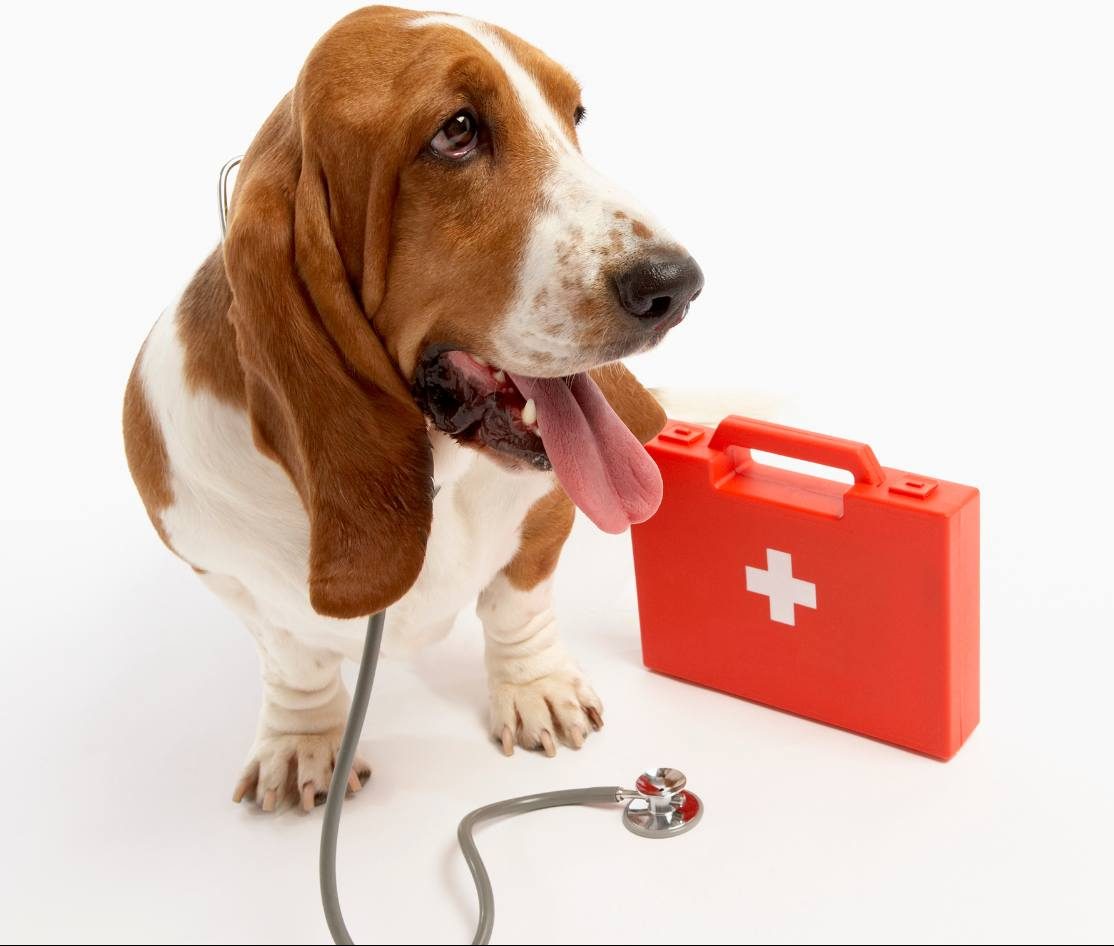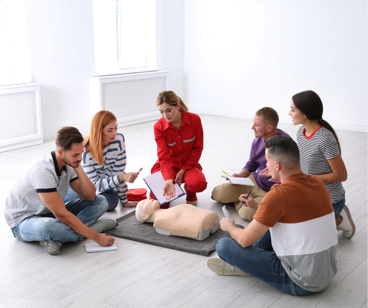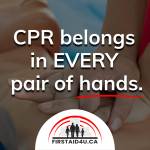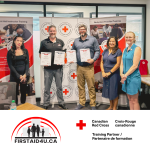Picture yourself seated on an aircraft, backing away from the gate, taxiing out towards the runway.
Onboard, they’re either playing the safety video, or the flight attendants are in the aisles doing a manual safety demo.
Now look around. How many passengers are paying attention? How many have already dozed off, are listening to music or maybe staring at their phones or out the window?
It’s important information. But most of us have heard it all before. And besides, it hasn’t really changed much over the years.
Well only part of that is true for first aid training. It’s important information, that much is true.
But first aid – and first aid training – have changed drastically over the years. Let’s find out how, in this edition of the FirstAid 4U first aid training blog.
First Aid Training Over the Years
Someone who last took a first aid training course 50 years ago (or 40, or even 30) would hardly recognize our first aid training today.
Basic first aid training was, once upon a time, all about mouth-to-mouth, the Heimlich Manoeuvre and tilting the head backwards to stop a nosebleed.
Fast forward to modern-day first aid training, and two of these are secondary procedures while one (the head tilt) is just plain wrong.
First Aid for Burns
 In olden times, when someone suffered a burn injury, do you know what was recommended to put on that burn? Butter!! Imagine that! While providing temporary relief, the oils in butter seal the skin, keeping in the heat and ensuring that the skin continues to burn.
In olden times, when someone suffered a burn injury, do you know what was recommended to put on that burn? Butter!! Imagine that! While providing temporary relief, the oils in butter seal the skin, keeping in the heat and ensuring that the skin continues to burn.
Current-day recommendations on burns are to run the area under cool water for 5-10 minutes, then cover with bandage to protect from infection.
CPR Training & Proper Life-Saving Procedures
CPR (cardiopulmonary resuscitation) used to be synonymous with airway first. “Give him mouth-to-mouth” someone would shout upon seeing someone not breathing. And they’d probably have added to the problem by pressing down on the patient’s windpipe.
These days we emphasize “CAB”:
 Chest Compressions
Chest Compressions- Airway
- Breathing
Most CPR situations call for a cycle of 30 compressions, then two quick breaths if needed.
And that pressing down on the windpipe thing? Hard pass.
First Aid Response for Potential Poisoning
 And before 2010 (that’s only 10 years ago!), inducing someone to vomit was thought to be a good solution to poisonings.
And before 2010 (that’s only 10 years ago!), inducing someone to vomit was thought to be a good solution to poisonings.
It turns out that in many cases, forcing that substance to come back up in reverse peristalsis can do more harm than good.
These days we know:
Call 9-1-1 first!
Let the medical experts know what was ingested and get advice on how to proceed.
The Value of Staying Current on First Aid Training
Whether you’re taking a workplace first aid training program, or learning/re-learning first aid for use in the home or elsewhere in your life, it’s important to stay current on your first aid & CPR training.
A lot has changed over the years.
Even if you took a first aid training just a couple or few years ago, there probably have been some changes & updates since then.
No matter where you are in Ontario, from the GTA to Ottawa, south to north, First Aid 4U has your first aid training needs covered.
We’re the leading provider of first aid training in Ontario. Find the location nearest you and get signed up today for a first aid training class and see what you’ve been missing out on.
Your colleagues, family or even a total stranger could end up thanking you for saving a life.

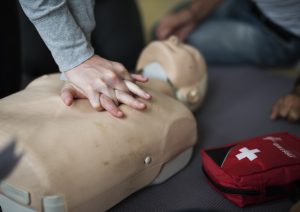 Chest Compressions
Chest Compressions